Bitten leaves on plants: eaten leaves and leaves with holes
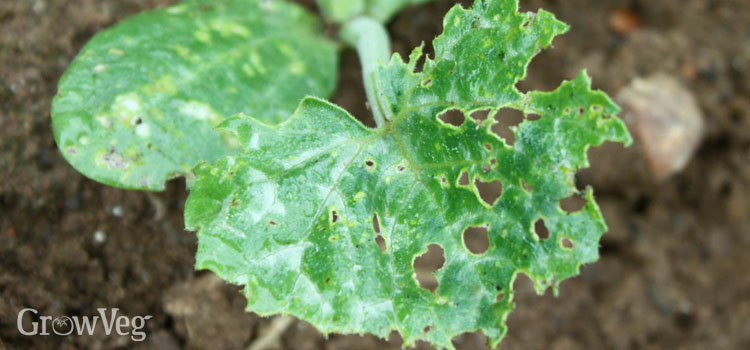
Hello to all agrohuerters! In today’s article we are going to take the entomologist’s magnifying glass and try to guess why we find bitten leaves on the plants in our orchard or garden.
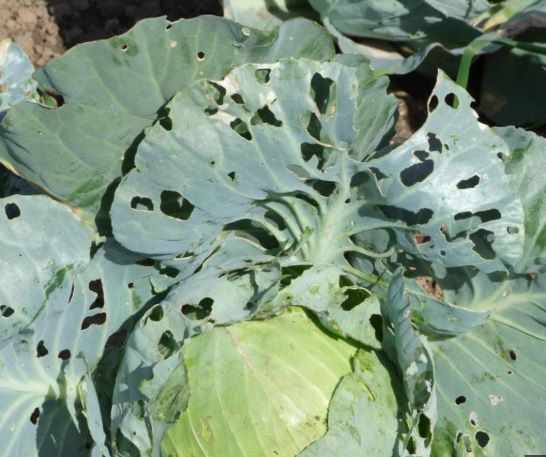
If we look carefully at the leaves of our plants we can see that, sometimes, there is a piece missing. These holes may be larger, smaller or distributed differently. For this reason, together, we are going to follow the clues that allow us to answer the following question: Who is to blame?
Who eats the leaves of my plants?
As we have seen in other articles, not all bugs have the same mouthparts. Some are biters, others are suckers, and others are chewers or scrapers. These last two are the ones that will bite our leaves.
- Chewing mouthparts: grasshoppers, caterpillars or beetles.
- Scraping mouthparts: snails and slugs
However, not always that we see damaged leaves is due to these organisms. Fungus or a hailstorm may also be to blame.
In this way, before going into detail, we can identify 4 main causes of bitten leaves or leaves with holes: Insects (caterpillars, beetles, grasshoppers), molluscs (slugs and snails), fungi or hail.
Leaves bitten by caterpillars
Affected plants: tomato, pepper, flax, beet, corn, potato, legumes, rice, etc.
Caterpillar species: Mamestra brassicae, Plusia gamma, Mythimna unipuncta, Pieris brassicae, Pieris rapae, Spodoptera spp. etc.
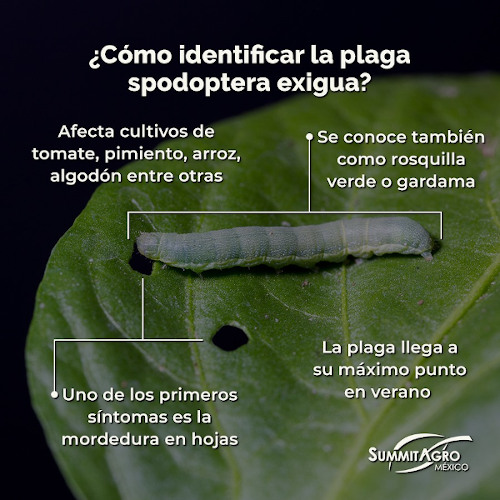
Caterpillars are undoubtedly one of the main culprits. Especially those that attack at night like the «noctuids». A trick to detect them during the day is to observe if they have left droppings on the leaves. They also tend to hide on the underside of leaves.
One of the most effective methods, if their density is not very high, is to remove them manually. On the contrary, if the pest is important, we can use biological control methods such as Bacillus thuringiensis or Trichogramma (parasitizes Lepidoptera eggs). To prevent their appearance, it is recommended to eliminate the weeds, where they lay their eggs.
Weevils: black bugs that eat leaves
Weevils belong to the order Coleoptera (beetles). The larvae of these insects attack the roots of the plants and the adults bite the edge of the leaves. The Otiorhynchus genus attacks oily plants (olive, jasmine,…), stone fruit trees, pome fruit trees, citrus fruits, vines and horticultural plants.
There are nematodes (Steinernematidae and Heterorhabditidae) that attack weevil larvae. In addition, other types of ecological products can be applied.
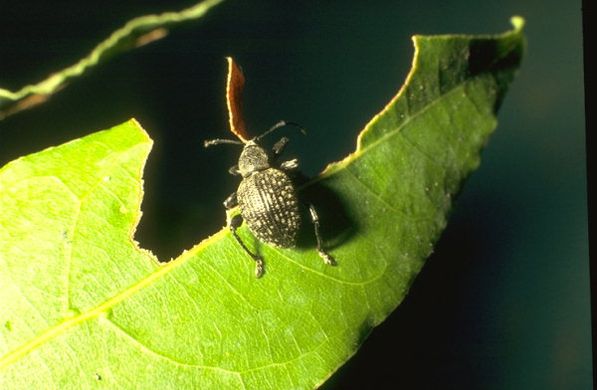
Small holes in the leaves: Pulguilla
The flea beetle, like the previous case, is a tiny insect that belongs to the Coleoptera group. Its name refers to the way it moves, jumping. It mainly affects beet, chard, potato or eggplant plants.
It makes tiny holes in the leaves, between 1 and 2 centimeters in diameter. If the plague is high and the plants are still young, they can cause their death. Above all, it is very active on hot days.
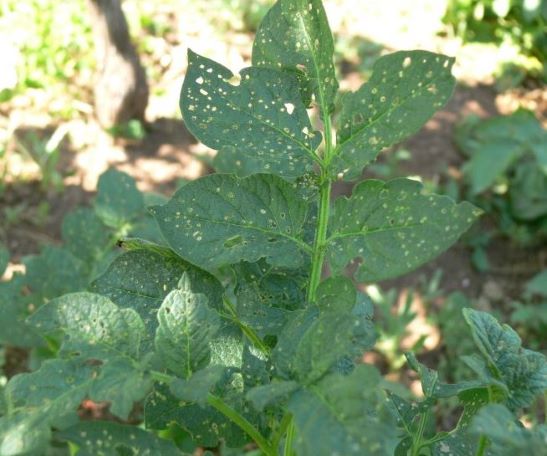
Leaves bitten by slugs and snails
Slugs and snails are herbivorous molluscs that like moisture and bite the leaves of plants. We can detect its presence if we observe a bright trail on the leaves. They can affect both the leaves and the fruits of almost all plants. Especially the tender leaves of chard, basil, spinach, lettuce, oregano, etc.
In the following image you can see the type of holes that slugs cause in the leaves:
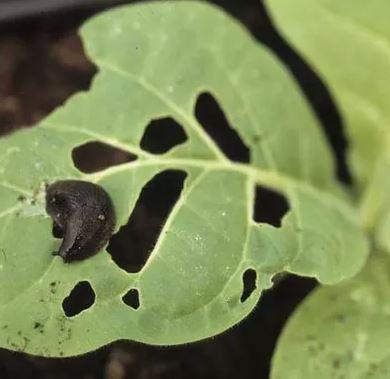
To prevent its appearance you can:
- Place plants that keep these mollusks away, such as nasturtium, mustard, thyme, ferns, sage or horsetail.
- Make barriers around the crops with ash, sand or eggshells.
To control snails and slugs we recommend:
- Manual elimination if the population is not very high.
- Beer traps (Yes, both snails and slugs like beer too!). Bury a plastic or glass container in the garden and fill it with beer. You will see how in a couple of nights the slugs and snails will be drowned in it.
- If the plague is very high, use Ferramol, allowed in organic farming.
Other Leaf Hole Culprits
fungal holes
In this case, it will be easy to tell them apart. At first they will be stains that will change color until they cause the death of the tissues and, sometimes, make small holes.
hail damage
Finally, this type of damage can also be caused by abiotic agents such as a hailstorm. Sometimes, if it is very intense, it can end the life of our plants. However, if the damage has not been very serious, it is important to take precautions due to a possible subsequent attack of fungi in the damaged areas.
References
- Brito, R., Pereyra, E., Sarica, C. (2018).Well trajectory effect on slug flow development. Journal of Petroleum Science and Engineering. 167, 366-374.
- Kalyanasundaram, M., Merlin Kamala, I. (2016). Chapter 4 – Parasitoids, Editor(s): Omkar. Ecofriendly Pest Management for Food Security, Academic Press, 109-138.
- Mangan A, Piaggio A, Hopken M, Werner S, Pejchar L (2018).A molecular analysis to assess codling moth Cydia pomonella L. (Lepidoptera: Tortricidae) predation by orchard birds, Ecological Indicators, 93, 1222-1225.
This is all for today agrohuerters. I hope you liked it and that it helps you. Any doubt or experience that you want to tell us, I encourage you to do so in the comments. We will be delighted to read you. See you in the next article!


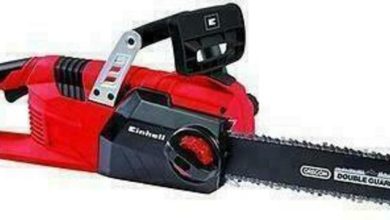
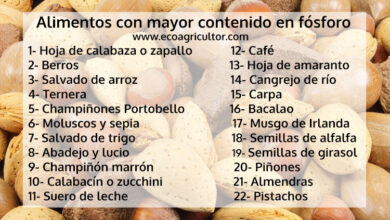
![Photo of How to Plant a Mimosa Tree: [Complete Guide + Step by Step]](https://www.complete-gardening.com/wp-content/uploads/2021/06/sembrar-mimosa-paso-a-paso-390x220.jpg)